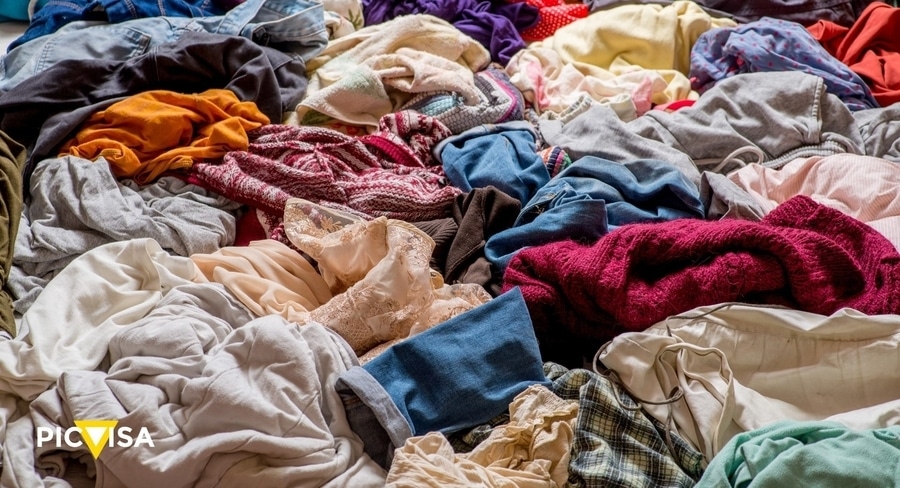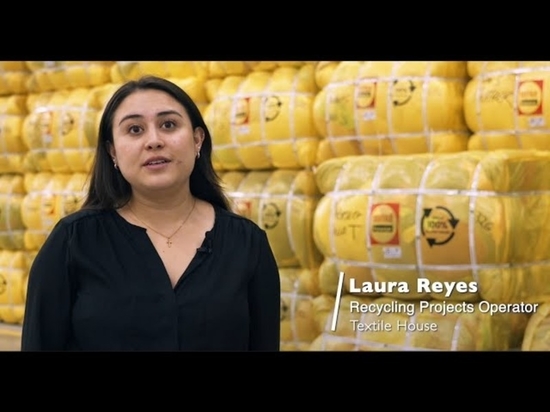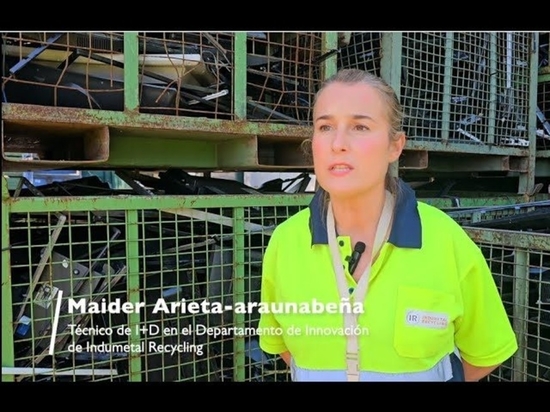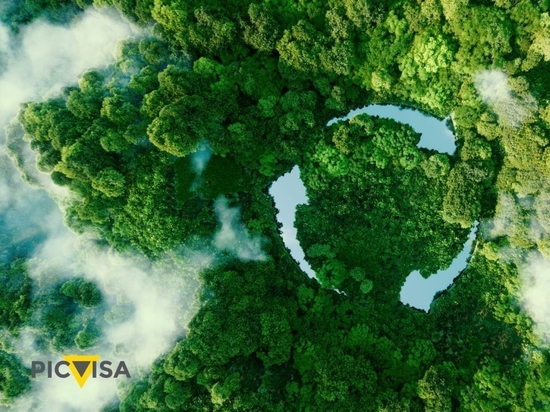
#Industry News
Textile waste by the numbers: Shocking facts you need to know
Textile waste by the numbers: Shocking facts you need to know
Textile recycling, Waste recycling
Textile waste by the numbers: Shocking facts you need to know
Did you know that textile waste statistics indicate that more than 90 million tons of textile waste end up in landfills every year? That’s the equivalent of a garbage truck full of clothes being dumped into a landfill every second. Global clothing production doubled between 2000 and 2015 due to the increasing demand for cheap clothing. At the current rate, worldwide clothing sales of all kinds could reach 160 million tons by 2050.
Unless we improve the way we manufacture, use, and dispose of our pants, skirts, blouses, t-shirts, and other garments, textile waste is projected to reach 134 million tons by 2030. This estimated figure helps us understand why it is so important to transition from a linear to a circular economy: only by choosing this path can we make the world more sustainable. And to achieve this, there’s nothing better than leveraging cutting-edge textile recycling technology.
Landfills overflowing with textile waste
According to Statista, a total of 183.8 billion garments were consumed worldwide in 2023 alone—14 billion more than the previous year. In terms of revenue, the United States and China lead a market whose industry, on a global scale, consumes 3.25 billion tons of resources to produce increasingly short-lived items, according to a report by Circle Economy and the H&M Foundation.
A 2024 report by the European Environment Agency (EEA), based on 2020 data, concludes that the European Union generated 6.95 million tons of textile waste that year—approximately 16 kg per person. Of this total, 5.2 million tons came from clothing and footwear, equating to 12 kg of waste per person annually. Only 1% of used clothing is repurposed into new garments; most of it is either incinerated or sent to landfills, many of which are located in Africa.
In Spain, according to the Spanish Association of Social and Solidarity Economy Recyclers (AERESS), only 12% of textile waste is recycled, while the remaining 88% ends up in landfills. In the United Kingdom, a Wrap UK report indicates that 30% of used clothing is recycled, while 70% is either landfilled or incinerated.
Some countries perform better. Thanks to an efficient collection and sorting system, Germany recovers about 75% of its textile waste for reuse and recycling, according to the German Federation of the Textile and Fashion Industry. In Sweden, data from the Swedish Environmental Protection Agency (Naturvårdsverket) shows that more than 95% of textile waste is collected, facilitated by an advanced waste management system and strong public awareness. Across the ocean, the U.S. Environmental Protection Agency (EPA) reports that Americans discard approximately 11.3 million tons of textile waste annually, of which only 15% is recycled.
Textile waste statistics highlight that most discarded textiles are recycled into lower-value products, such as insulation or stuffing materials. This is largely driven by overproduction—companies accumulating unsold inventory—and, more significantly, excessive consumption, especially due to the rising demand for fast fashion, which promotes a throwaway culture.
Major environmental impact
87% of textile fibers—73% of which come from clothing—end up in landfills or are incinerated, contributing to both land and air pollution. However, the negative impact begins much earlier: excessive water consumption during manufacturing, the use of toxic substances in production (such as dyes and chemical residues), the release of microplastics when washing low-quality textiles, and packaging waste used to protect garments during transportation and storage. Additionally, purchasing textiles through e-commerce significantly increases the carbon footprint due to transportation emissions.
According to the European Environment Agency, textile purchases in the EU in 2020 generated around 270 kilograms of CO2 emissions per person, resulting in a total of 121 million tons of greenhouse gas emissions from textile consumption. Textile waste statistics indicate that the global fashion industry is responsible for 10% of all greenhouse gas emissions, with fast fashion being the biggest contributor to textile waste.
Furthermore, many companies in the fashion industry use non-biodegradable synthetic materials, exacerbating the environmental impact. Another major source of pollution comes from workwear and uniforms, particularly in industries where uniforms are frequently replaced, leading to the generation of textile waste on a large scale.
Ironically, even textile recycling can generate waste, especially when inefficient systems are in place. Textile waste statistics highlight that without the proper technology, recycling can result in unusable waste, further exacerbating environmental pollution. This is where companies like PICVISA come in, designing, developing, and commercializing advanced solutions for textile recycling. An effective textile recycling management system requires the right machinery and robotic solutions to efficiently process materials and determine which fibers can be repurposed into new textiles.
How can we address waste in the form of fabric scraps, production leftovers, and non-reusable materials? PICVISA offers an advanced solution: the ECOCLIP optical sorter. This technology ensures precise and automated classification of fabric scraps in textile recycling processes, sorting them based on fiber composition and color. ECOCLIP guarantees quality control by eliminating contaminants before recycling—such as unwanted fibers, different colors, hard points, metals, seams, and other impurities—ensuring cleaner and more efficient textile recycling.
What happens to recycled textiles?
The recovery of fiber, yarn, or fabric for reprocessing and transformation into new and useful products is one of the key strategies in textile recycling.
To manage these processes efficiently, automated technology is essential—like the solutions developed by PICVISA. For example, the ECOSORT optical sorter enables the automatic classification and separation of textiles based on composition (NIR), color (VIS), and/or shape. Thanks to its multispectral vision technology, ECOSORT can be configured for quick adjustments in automatic textile sorting, adapting to the industry’s diverse material needs.
ECOSORT is already improving processes at Textile House, a Slovak company that has been at the forefront of circularity for over 20 years, transforming discarded textiles into reusable resources. At its sorting center in Slovakia, more than 100 tons of textile products are processed daily, with a strong commitment to maximizing reuse.
With the growing challenges in the textile industry, recycling non-reusable textiles has become essential. Thanks to ECOSORT’s advanced fiber classification technology, Textile House can now efficiently sort textiles by fiber type and composition, optimizing materials for the next steps in the recycling chain. Textile waste statistics show that repurposing textile waste into new products is crucial for sustainability. To date, Textile House has developed sustainable products such as Cover Mats from synthetic sweaters, cotton wipes, and recycled pillows made from repurposed feathers.
We must recognize the scale of the problem. The rise of online shopping, flexible return policies, changing consumer preferences, and fast fashion business strategies have led to a surge in textile waste—and not just from consumers. In recent years, both fast fashion brands and luxury labels have destroyed clothing, shoes, and other unsold or returned textiles.
Destroying unused textile products exemplifies an “extract-produce-waste” approach, highlighting the inefficiency of current linear production-consumption systems, which cause avoidable environmental and climate damage. Textile waste statistics indicate that without systemic change, these inefficiencies will continue to grow. Partnerships like the one between PICVISA and Textile House demonstrate that progress toward a more sustainable textile industry is possible.






